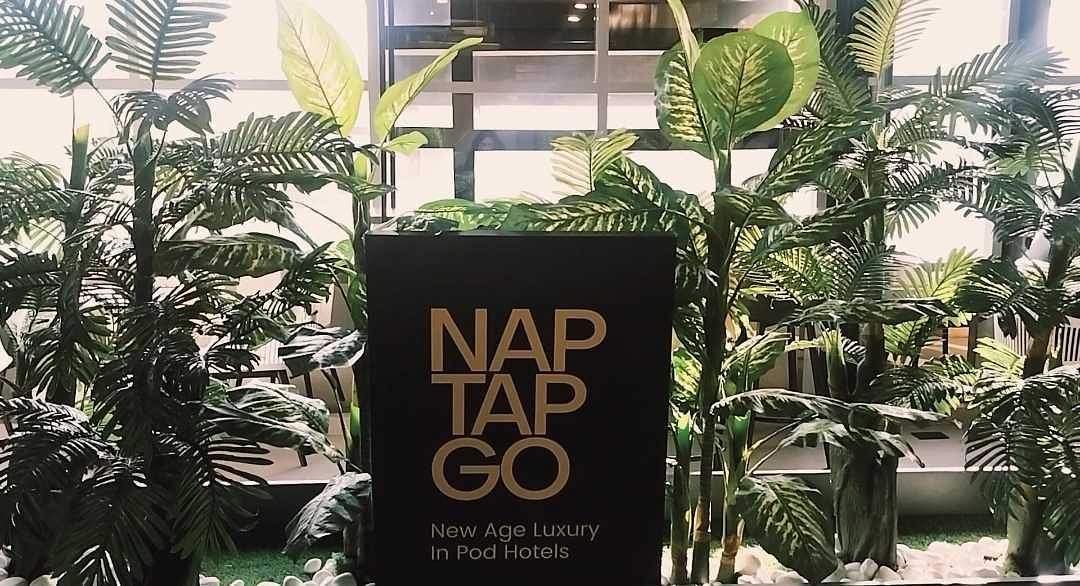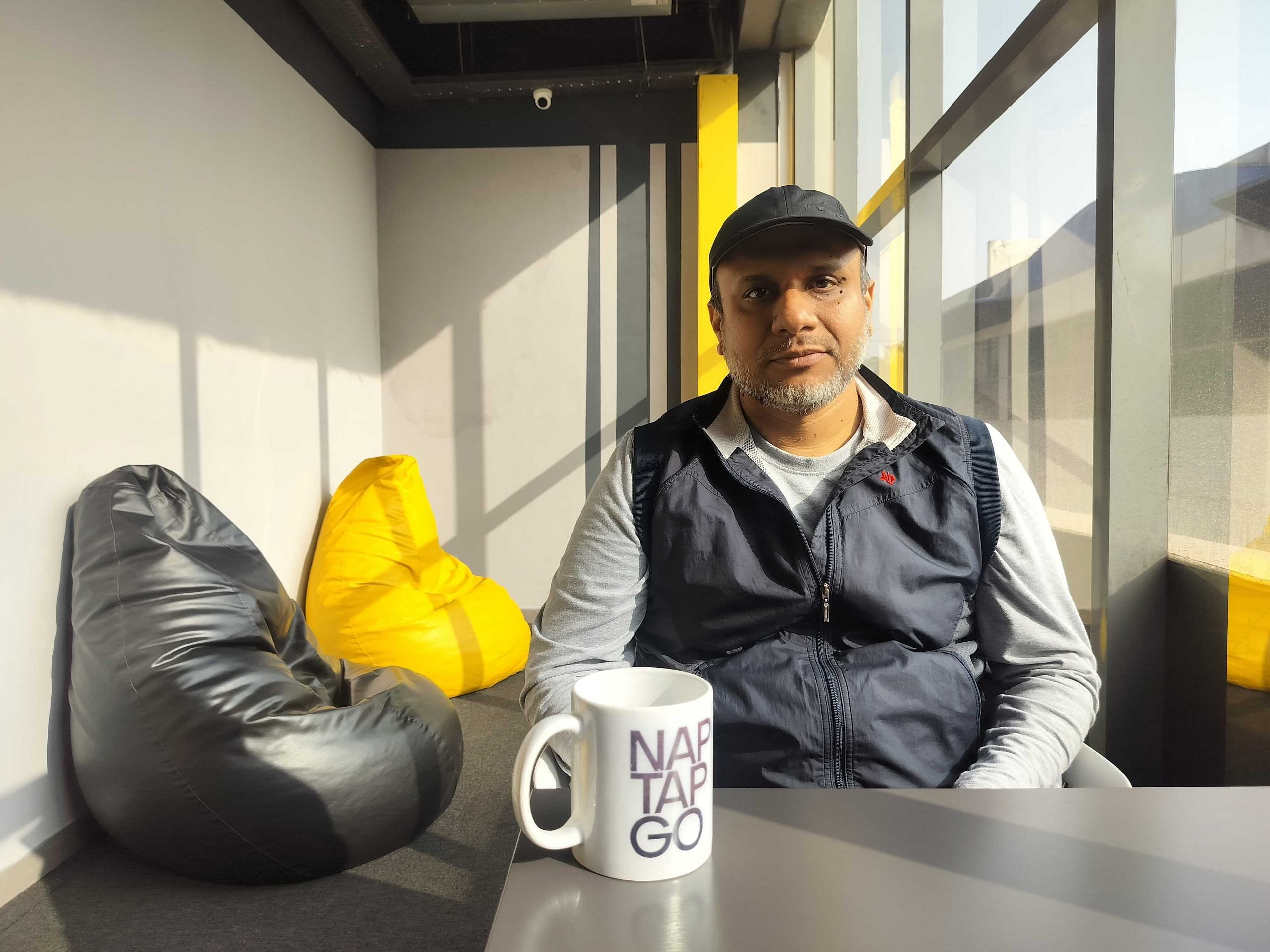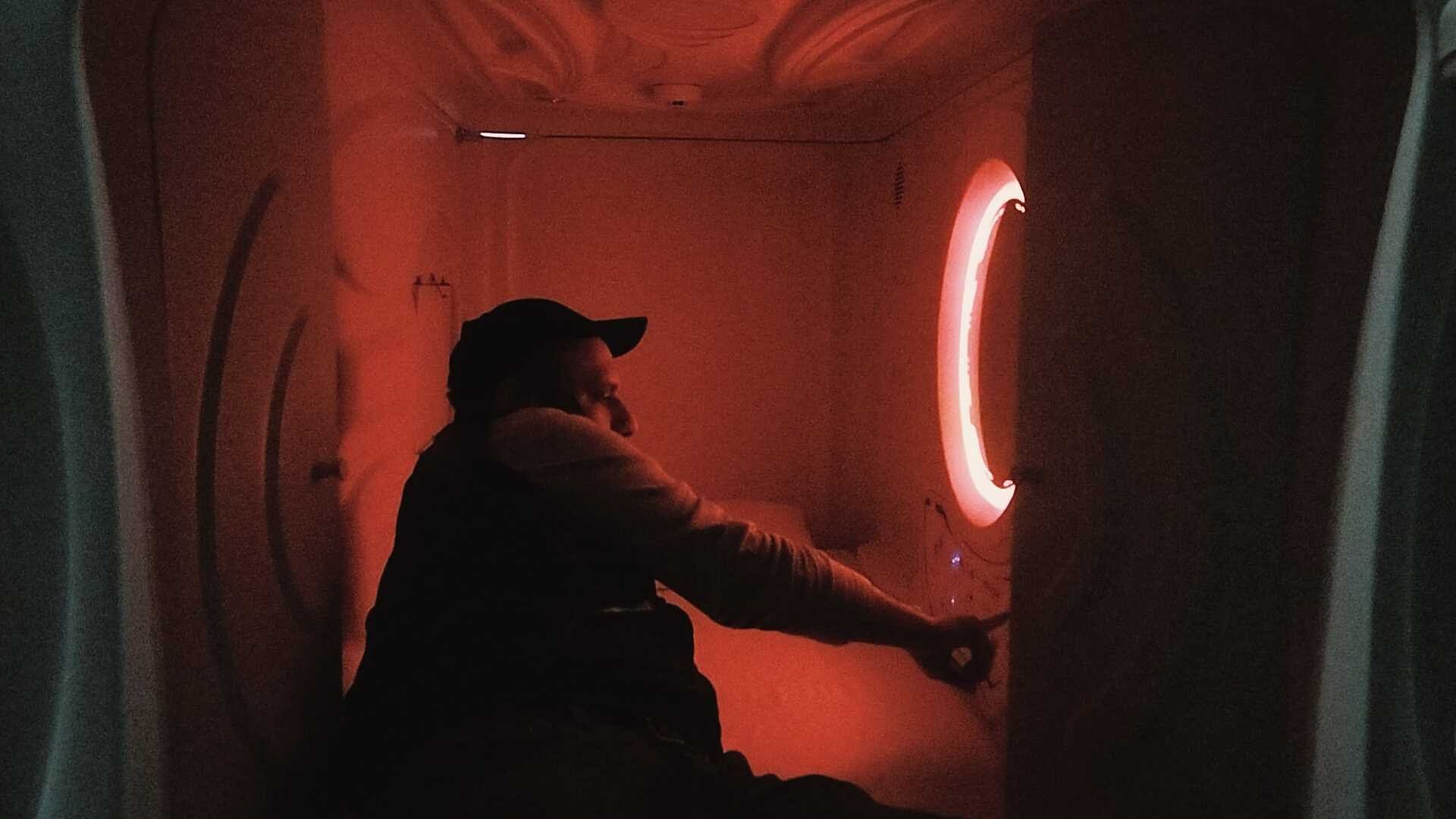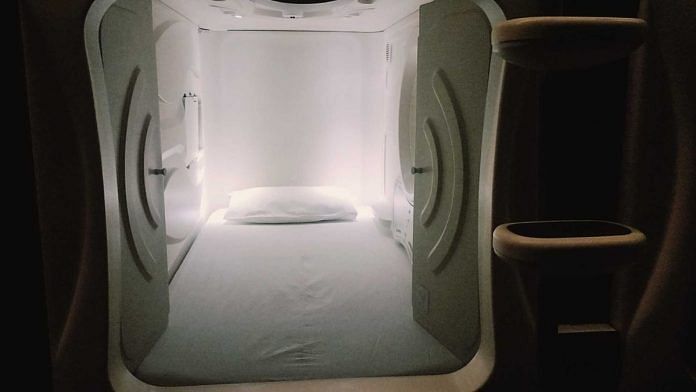Noida: Nitin Malhotra used to travel extensively for work, and everywhere he went, he saw a serious flaw in India’s budget–friendly hospitality market: the lack of nice, clean hotels to nap for a night. Malhotra decided to look for a solution to the apathetic state of affairs. And, he found the answer in Japan.
Here come India’s pod hotels.
In 2023, Malhotra founded Nap Tap Go, an ambitious start-up which seeks to disrupt budget travel in India. Through the venture, he not only wants to target backpackers frolicking in India’s tourist hotspots, but also provide affordable stay in religious tourist destinations, corporate hotspots, and near bus stops, railway stations, as well as hospitals where attendants of patients can find a place to sleep.
The first Nap Tap Go pod hotel has been running in Noida’s Sector 63 for over a year now. Two others are under construction in Jammu and Kashmir’s Katra and Amritsar, Punjab.

‘Nap, tap, and go’
Situated right behind Noida’s Electronic City metro station, Nap Tap Go’s property at the fag end of Noida, bordering Ghaziabad, is in the middle of a bustling business district.
The hotel is surrounded by offices, hospitals and start-ups—restaurants, bars, and cafes have also come up in the area in the last five years catering to young corporate workers. Which is why the property attracts a lot of corporate travellers.
Most of the guests staying in pods are in the age group of 25-45 years, and only 30 per cent of them are women.
Malhotra said 30 per cent of all bookings are made on an hourly basis, while 50 per cent of the travellers just “nap, tap, and go” in a day’s time. The longest people have stayed at the pod hotel is four to five days.
Most travellers are Indians, but 3-4 per cent of tourists are also international. Bookings can be made through major online travel websites like MakeMy Trip, Goibibo, Airbnb etc.
ThePrint saw backpackers, hybrid workers, couples, all checking in, eating and hanging out in the canteen of the pod hotel.
Jivtesh Singh, who works in finance at a MNC in Noida, travels to the city whenever he is needed in the office. Other times he stays with his family in Roorkee, Uttarakhand.
“I work in a hybrid model and have to come to the office twice a week. I chanced upon the pod hotel a year ago on Airbnb. I love this place, and am a regular here,” he told ThePrint.
Singh stays at the pod twice a month, and finds it affordable. “Other hotels charge you extra for checking in at night, so their option to book at any time of the day is also extremely convenient,” he added.
Nap Tap Go claims that their occupancy rate is constant at 80 per cent, and goes up to even 90 and 100 per cent during season.
Because of the constant influx of corporate travellers, the place also leads to solid networking opportunities. Singh, for example, has met and befriended people who work at his organisation while having tea at the pod hotel.
Also read: Delhi is missing out on planetary parade due to pollution. Rest of India enjoys watch parties
Budget stay in India
From smelly rooms to stained bedsheets that never really win your trust, India’s budget hotel industry struggles with quality control.
“Budget hotels are generally a hit and a miss. They’re either too expensive or they don’t have hygiene. What stands out to me about the company (Nap Tap Go) is that you know from the get-go what you’ll be getting whilst coming here,” said Singh.
Singh and Malhotra argue that India has nailed the luxury hospitality industry, but quality stays in budget-friendly hotels is wanting.
Standardisation is at the heart of Malhotra’s ambition to provide an affordable, clean option for budget travellers in India.
“India’s 50 per cent travellers are from the middle class or the lower-middle class. The current options in the affordable price range are not standardised. There is an issue of hygiene, maintenance, cleanliness. These travellers need a good space to stay, and at Nap Tap Go we want to provide a good experience in the price range of less than Rs 3,000,” Malhotra told ThePrint.

Ashwinjit Singh, who looks after investment strategy and growth at T9L Qube, a venture builder, said the capital required to build a pod hotel is significantly lower than that of a traditional hotel, making such projects easily scalable.
“In a traditional set up, building a hotel would require an investment of at least Rs 25 crore. But a pod hotel only needs one floor in a commercial complex, and can be built for as low as Rs 80 lakhs,” he said, adding that this opens up space for micro entrepreneurs to enter the hospitality industry.
According to Malhotra, the saving on the capital is then passed on to the customers.
Ashwinjit Singh also highlighted that operational costs of pod hotels are a fraction of what is required to run a conventional budget hotel, with only 2-3 people needed to be on shift at all times.
At the Noida property, the company has 18 pods and pod rooms that can accommodate a total of 20 people.
The company is also in talks with various hospitals to open such spaces for attendants of patients seeking treatment. “A lot of our guests are actually relatives of people admitted in Fortis Noida 62. And such attendants need a place to sleep in, freshen up at. We want to create such spaces around major hospitals in India. And are currently talking to people to get us space on the hospital campus itself,” Malhotra said.
Also read: Nehru saw scientific temper as inextricably linked to freedom
The pod experience
Located on the first floor above a car showroom, Nap Tap Go has been built in a commercial space on an area of 3,000 sq ft—roughly the size of a two- to three-bedroom apartment.
Keeping in mind Japanese etiquette, shoes are not allowed beyond the reception area. Travellers checking in have to take their shoes off and put them in a rack at the entrance.
There’s a small sitting area with bean bags, a vending machine, and some space to work. Everything is available in ready-to-eat format—one can buy tea, coffee, or even order rajma chawal from the vending machine.
Going to the pods is like entering a different world altogether. It’s a narrow lane that leads one to their rooms. At this property, Malhotra has 18 rooms—which includes two double rooms.
The single-person pod looks like an MRI machine that one can step into and sleep for the night. The interiors are mostly made of plastic. In a small area, Nap Tap Go also provides a foldable table for your laptop, a mirror, as well as a panel with different colour lights—green, pink to purple—that can be used to change the vibe of the pod.

The company also lets a customer book the rooms on an hourly basis to reduce the cost of staying even further. One can book their pods for as low as Rs 500 an hour.
The property also provides a locker room for travellers to keep their luggage in, and has washrooms too.
There is also no strict check-in time followed by the pod hotel. People can book the room and check in even at 1 am, and pay for only as long as they wish to use the property.
The company plans to go on a franchise model to further scale up their brand, and are looking at places like Varanasi, Shirdi, and Goa to expand in.
The biggest drawback of the pod hotel is how claustrophobic it can get. The rooms do not have any windows, and are crammed up. Malhotra, however, is confident that travellers will choose staying in the pods for the price point and the offerings.
For Singh, he said he is used to travelling in trains and has stayed in congested spaces, so the small pod isn’t an issue. “It is more claustrophobic when the place has other people staying in a room. These rooms are private, so I like them,” he added.
(Edited by Aamaan Alam Khan)






